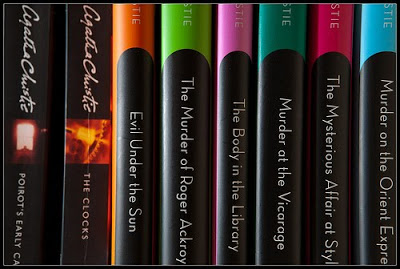Agatha Christie’s Writing Method

She was clever, learned, and unflinching when it came to plunging a paper knife into a man’s back or poisoning an old lady with strychnine. Agatha Christie, the author of more than 60 crime novels, six straight novels, more than 140 short stories, 22 plays, and uncounted poems, wrote with matchless poise about death, greed, and, on occasion, truly nasty, motiveless evil.The Christie trick—pulled off again and again, starting in 1920 and ending only shortly before she died in 1976—was that her types weren’t always predictable in the way you first assumed. You could never guess the murderers until she unveiled them, and then you had that fantastic sensation of surprise and—at the same time—utter inevitability.
What, then, could be more shocking than to discover that the dame was no lady? Agatha didn’t sit at a pristine desk neatly typing her novels, Chapter 1 followed by Chapter 2, and so on, before donning gloves and descending at 6 p.m. for a sherry. In Agatha Christie’s Secret Notebooks, John Curran, a Christie expert who has trawled through 73 of the author’s previously unread notebooks, reveals the utter derangement in Christie’s method.
Her less-than-refined writerly day began with finding her notebook, which surely she’d left right there. Then, having found a notebook (not the one she’d used yesterday), and staring in stunned amazement at the illegible chicken scratchings therein, she would finally settle down to jab at elusive characters and oil creaky plots. Most astonishing, Curran discovers that for all her assured skewering of human character in a finished novel, sometimes when Christie started her books, even she didn’t know who the murderer was.
The notebooks contain thousands of ideas, many dated years before the work they appeared in was finished, few of them consecutive, since she scribbled in whichever was nearest to hand. At any one time, Christie would have half a dozen notebooks going.
Christie’s promiscuous note-taking meant that any one novel or play might be distributed over multiple notebooks and many, many years. Christie used Notebook 3 for at least 17 years and 17 novels. The other notebooks were more or less like this; only five notebooks deal with a single title (three notebooks contain only chemical formulae, the last notebook is blank). There’s some evidence that Christie tried to take charge of the pile, listing the contents at the start of one notebook. For some novels, she tried to impose method on her chaotic practice, assigning letters to scenes and moving them around. But her efforts at organization petered out pretty quickly.
How on earth did Christie draw her perfectly tensioned structures from this formless mess?
Read the entire article to find out.
Image Source : kennymatic









